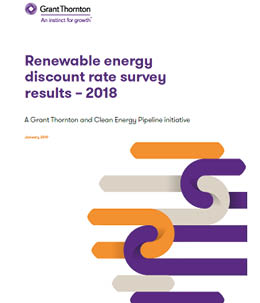-
Transactional advisory services
Find out more about the transactional advisory services of Grant Thornton Financial Advisory Services
-
Valuations
Find out more about the valuations services of Grant Thornton Financial Advisory Services
-
Mergers and acquisitions
Find out more about the merger and acquisition services of Grant Thornton Financial Advisory Services
-
Forensic and investigation services
Find out more about the forensic and investigation services of Grant Thornton Financial Advisory Services
-
Recovery & reorganisation
Find out more about the Recovery & reorganisation services of Grant Thornton Financial Advisory Services
-
Business risk services
Find out more about the business risk services of Grant Thornton Financial Advisory Services
-
Business consulting
Find out more about the business consulting services of Grant Thornton Financial Advisory Services
-
Capital market
Capital market
-
Corporate and business tax
Find out more about our corporate and business tax services.
-
Direct international tax
Find out more about our direct international tax services.
-
Global mobility services
Find out more about our global mobility services.
-
Indirect international tax
Find out more about our indirect international tax services.
-
Transfer pricing
Find out more about our transfer pricing services.
-
Litigation
Our lawyers and accountants can manage all defense measures provided not only by the Italian law, but also by EU regulations and conventions
-
Family business
Find out more about our Family business services.
-
Legal
The client can be assisted in every need and with the same care both on important operations or disputes and on simple matters

-
Back office outsourcing
Find out more about our Back office outsourcing services
-
Business process outsourcing
Find out more about our business process outsourcing services.
-
Compilation of financial statements
Find out more about our compilation of financial statements services.
-
Tax compliance
Find out more about our tax compliance services.
-
Electronic invoicing
Find out more about our electronic invoicing services
-
Electronic storage
Electronic storage is an archiving procedure that guarantees the legal validity of a digitally stored electronic document
-
Revaluation of corporate assets
Find out your civil and fiscal revaluation of tangible, intangible and financial assets
-
Payroll
Complete and customized payroll service, integrated with digital solutions and compliant with Italian and international regulations.
-
Labor consultancy
We help Italian and international companies manage all aspects of their workforce.
-
HR & Payroll Advisory Services
We review contracts, payroll, and risks for extraordinary transactions and we assess tax, labor, and safety risks in outsourcing contracts.
-
Extended services
We provide integrated digital tools to simplify HR management.
-
HR Infinity Portal
The HR Infinity Portal is Zucchetti’s platform designed to centralize communication between the company and its employees.
-
Cybersecurity
GT Digital helps clients structure information security management internal functions, also through partially or totally outsourced functions
-
Agile and Programme Management
GT Digital provides support in the adoption and implementation of different portfolio management
-
Robotic Process Automation
Our “BOT Farm” can rely on digital workers able to help clients in routine activities, allowing employees to deal with more added-value activities
-
Data strategy and management
GT Digital can support clients in seizing the opportunities offered by Big Data, from the definition of strategies to the implementation of systems
-
Enterprise Resource Planning
We support clients in selecting the most appropriate ERP System according to their specific needs, helping them also understand licensing models
-
IT strategy
GT Digital supports clients in making strategic choices, identifying innovation opportunities, comparing themselves with competitors
-
IT service management
We can support with software selection and with the implementation of dedicated tools for the management of ICT processes
-
DORA and NIS 2
The entry into force of the DORA Regulation and NIS2 represents a major step towards the creation of a harmonised regulatory framework
Grant Thornton, in collaboration with Clean Energy Pipeline, is pleased to present the 2018 Grant Thornton renewable energy discount rate survey report.
This report follows the 2017 renewable energy discount rate survey report.
The discount rate (a proxy of cost of capital) for secondary market renewable energy M&A deals is a vitally important piece of information for investors. It is a key driver in determining the fair value or market price for projects. However, this data is extremely hard to gather so investors often have to rely solely on their own experience and advice from valuation experts in evaluating the cost of capital.
In this spirit, Grant Thornton launched a survey to gauge investors’ perception of cost of capital. We asked one simple question: What most closely matches the discount rate you would expect to see for the following secondary market deals? We asked this with respect to levered and unlevered secondary market ground mount solar, onshore wind, offshore wind, biomass and hydro projects.
In addition, we have also asked about the level of premium for subsidy-free (100% merchant exposure) projects, terminal value assumptions, accounting practice for decommissioning costs in end of life forecasts, and percentage of capital expenditure (capex) considered as reasonable for a Maintenance Reserve Account (MRA).
The survey was distributed across thirteen major geographies: Australia, Brazil, Canada, France, Germany, India, Ireland Italy, Japan, Nordics, Spain, the UK, and the USA.
Italy: Regulatory landscape and incentives
By the end of 2015, Italy had already surpassed its 2020 target of 17% renewable electricity in its total power mix and in June 2018, the country joined hands with other nations to support a binding renewables target of 35% by 2030 across the EU. According to industry forecasts, the amount of installed wind and solar capacity in Italy is expected to reach some 63 GW by 2030 from around 35 GW at the end of 2017.
Italy has also shifted towards a competitive bidding regime, aiming to contract around 4.8 GW of renewable energy capacity between January 2019 and January 2021 through seven wind-solar auctions specifically for 1+ MW projects. Regardless of the technology, projects that are linked with electric vehicle charging stations will be prioritised. The first two tenders will each assign around 500 MW of capacity,
with the third to fifth seeing around 700 MW each and the last two contracting 800 MW each. The first 500 MW has been scheduled to take place in January 2019.
The new auction scheme is expected to revive the utility scale solar sector in Italy, which has suffered from the end of the Conto Energia FIT schemes since 2011.

